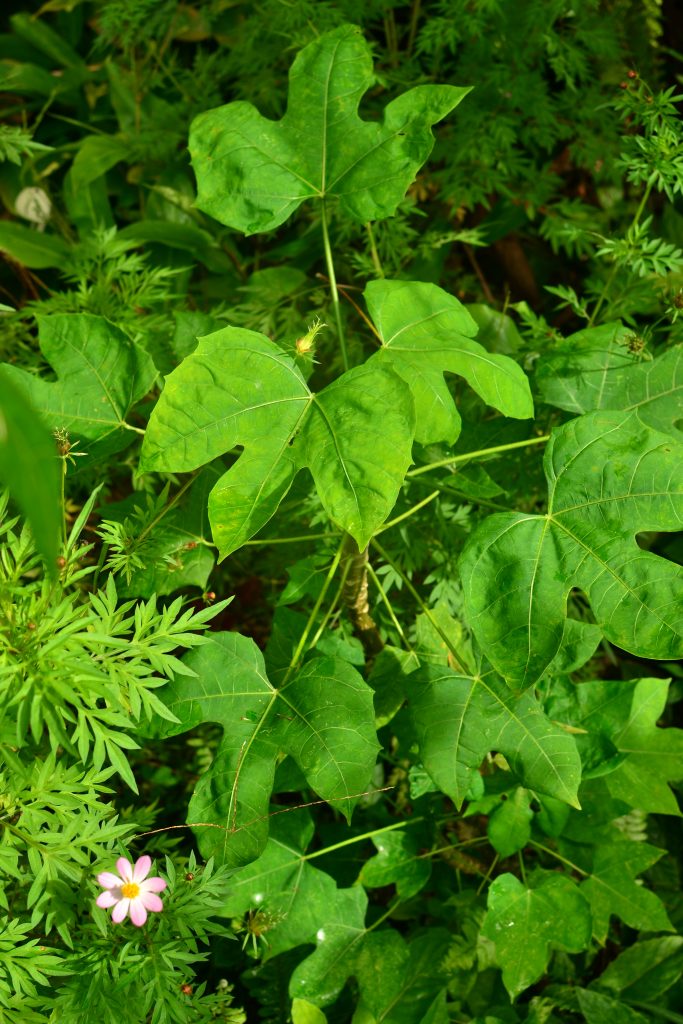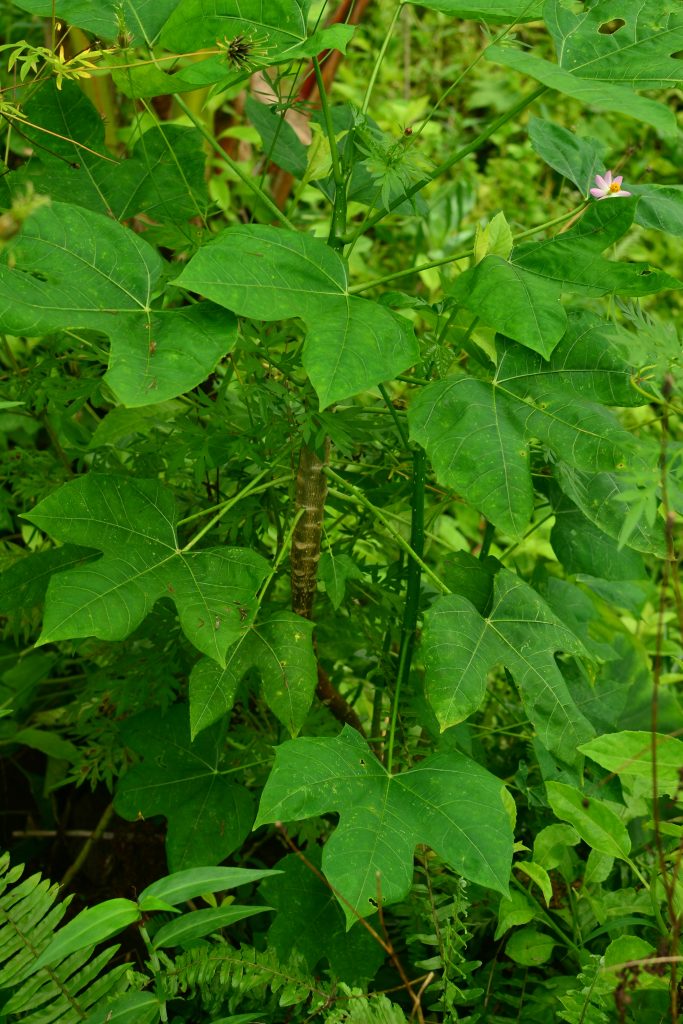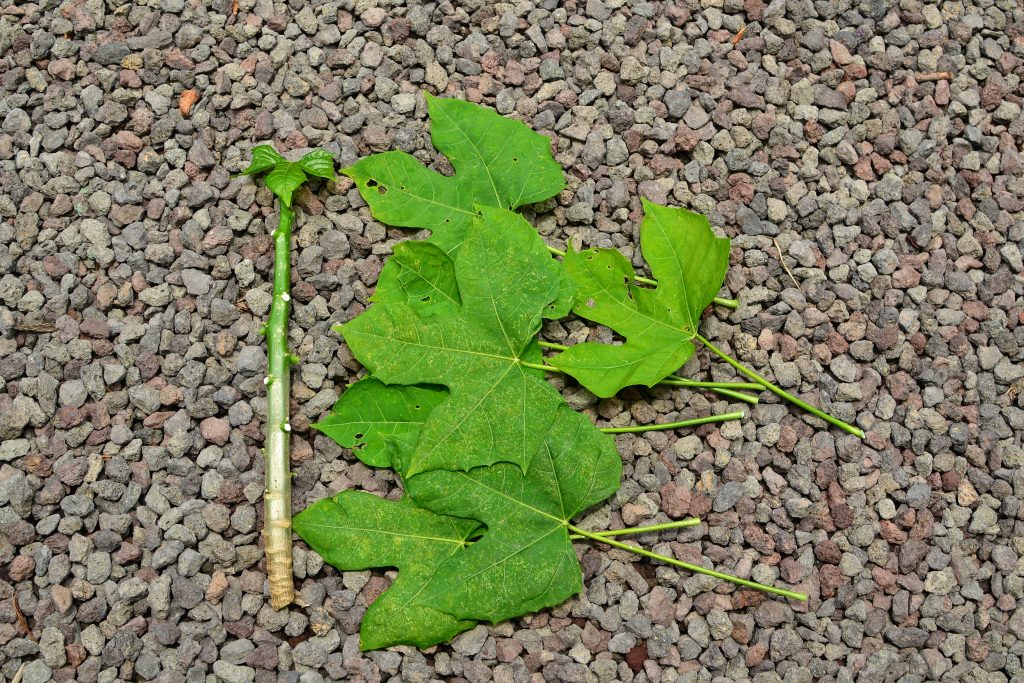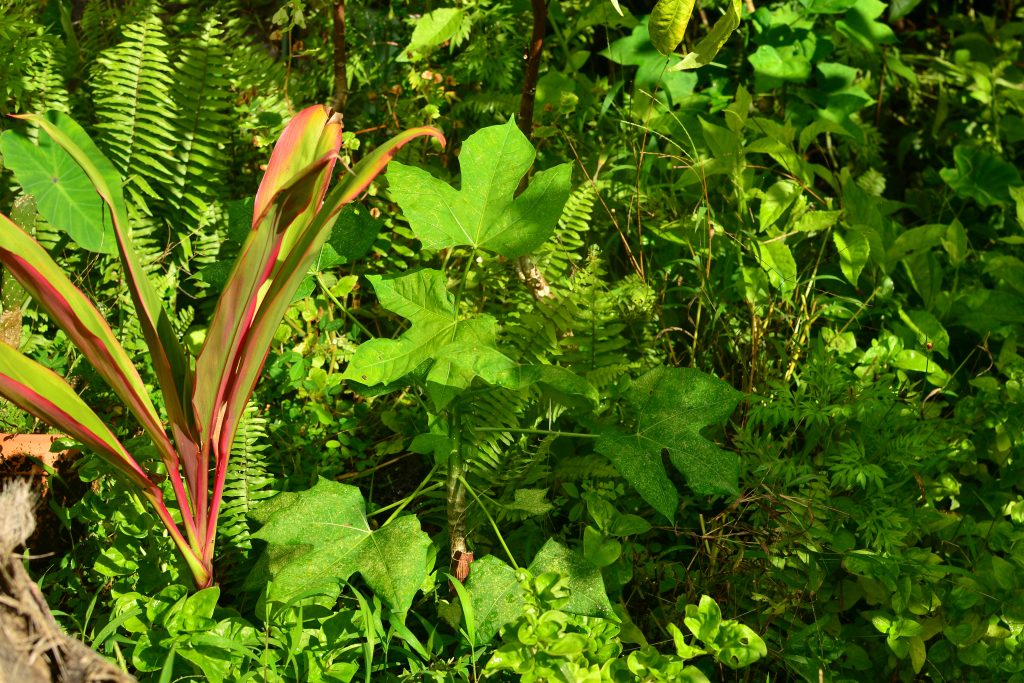Description
Spineless chaya, Cnidoscolus chayamansa, is another highly nutritious perennial ‘tree spinach’ (not to be confused with the closely related spiny chaya, Cnidoscolus aconitifolius). This productive plant can reach heights of over 12 feet, is fairly fast growing and requires very little attention. The abundant leaf matter is high in protein, calcium, iron, and vitamins A and C. It is commonly consumed fresh/cooked, but can also be dried and stored for use as a dietary supplement for humans and animals. This plant thrives in dry tropical regions, but with a little care, can also be grown in very wet places.


Propagation
Spineless chaya is typically grown from cuttings. In its native habitat, it allegedly produces seeds. However, I have never heard of that happening here.
Take a slightly woody stem cutting and remove it from the parent plant. Remove all but the top leaves and allow the cutting to dry out a few days. The cut/sap will callous, and prevent it from rotting from the bottom of the stem. I’ve found it’s best not to remove the top part of the cutting and to only utilize cuttings with growing tips still attached. This prevents rotting from the top down. Once dried a few days, proceed to stick it into the ground!

Remove leaves but retain growing tip. Allow to dry/callous and proceed to plant!
Care
Spineless chaya can be grown in part shade or full sun. Plants grow slowly at first and begin to grow rapidly once the hottest months come around. This plant is basically pest and carefree.
Eating
Boiling or frying are the main cooking methods. Chaya leaves contain hydrocyanic glycosides; make sure to cook leaves for at least five minutes to remove toxins. While this specie can technically be eaten raw, toxin tolerance will vary depending on the individual. Therefore, it’s probably best to keep raw leaf consumption to a minimum. New shoots are also cooked and eaten as a vegetable.
Where to obtain planting materials
This plant is very easy to find within Big Island gardening communities. Ask a friend for a cutting!
My Garden
I’ve grown this plant for a few years now, but it’s taken me awhile to figure out the best way to propagate because of its tendency to rot out. With my newest technique described above, I’m finally starting to spread it around. I haven’t had the most productive plants grown here but I have a few friends in nearby places with huge chaya plants. It is persistent, but I haven’t seen its full growth potential at my site. It is a pretty plant, though!

Spineless Chaya grown with: ti, kalo, sissoo spinach, okinawan spinach, cosmos, edible hibiscus, kava, Cuban oregano, orange, and coconut
Happy Gardening!
Pingback: Spiny Chaya (Cnidoscolus aconitifolius) | Tropical Self Sufficiency